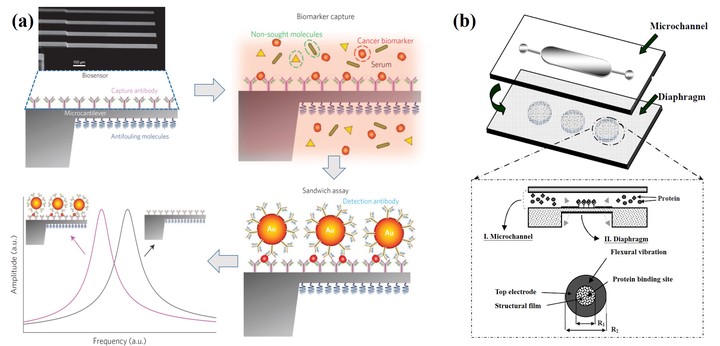Research on the Theory and Method of Ultrafine Mass Recognition Based on the Vibration of Suspended Membrane Microstructure
 Working Principle
Working Principle
The identification of atomic/molecular ultralow mass has always been an essential scientific problem and a hot research topic in the micro/nano field. Among many of those novel identification components that are emerging, suspended membrane microstructures have the characteristics of high stiffness, large working area, and being friendly to liquid environment, etc., which are greatly superior to the mainstream micro-beam detection platform, so they have been widely concerned and studied. However, the research of the ultralow mass identification based on suspended membrane microstructures at home and abroad is still in the basic stage, and the relevant theories and tests are not comprehensive and systematic enough, with the limitations including the identification model being too simple, the identification target and the identification parameter being single and so on. To this end, this project plans to: (1) establish the dynamic model of the suspended membrane-attachment system, in which the residual stress, scale effect and adsorption effect should be fully considered; (2) explore the inverse solution to the above dynamic model, and provide an effective method to identify the mass and/or positions of multiple targets on the membrane surface; (3) develop a method for the targeted adhesion of ultra-small substances on the micro membrane surface, and offer a test device and scheme for the identification of ultralow targets based on the vibration of suspended membrane microstructures. This project will conduct in-depth research on the physical and mechanical mechanism of the complex vibration system composed of the suspended membrane and ultra-small attachments, and give the support of basic theory and key method for the development and application of ultralow mass detection system with a micro membrane as the core element.